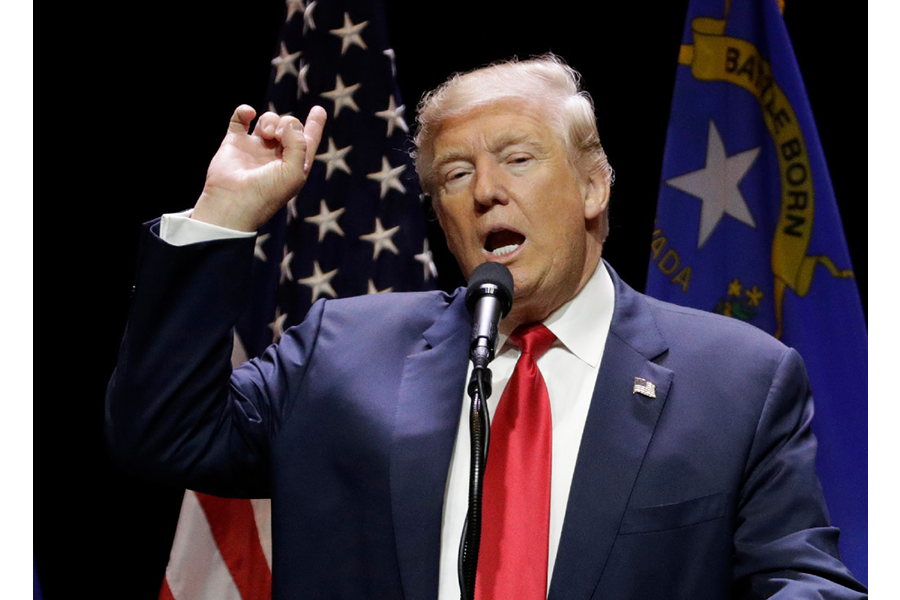Five tax policy issues to watch in the Trump administration
Loading...
Donald Trump’s election as the nation’s 45th president combined with continued Republican control of both the House and Senate will almost surely result in passage of a major tax cut in 2017. But the size and design of that measure remain highly uncertain.
In contrast to other campaign promises, such his vow to build a wall at the US-Mexico border, Trump was highly malleable when it came to the specifics of his tax agenda. Indeed, Trump proposed three very different plans over the course of his campaign. In many ways, his most recent version paralleled a proposal offered last spring by House Republicans, though it differed in some key respects.
It is impossible at this early date to know what a 2017 tax cut will look like, but here are some key issues to watch:
How big will it be? In his most recent plan, Trump proposed cutting taxes by $6.2 trillion over 10 years, according to Tax Policy Center estimates. That’s twice the size of the House Republican plan. And it would cut taxes by 2.6 percent of Gross Domestic Product, second only to Ronald Reagan’s 1981 tax cut as the largest in modern US history. Including added interest and the macroeconomic effects, Trump’s tax cut would increase the national debt by $7 trillion over the next decade and by $20 trillion over two decades. With the Congressional Budget office projecting an annual deficit under current law of $1.3 trillion, or 4.9 percent of GDP, in 2026, it is hard to imagine Congress accepting a plan even approaching the size of the new president’s proposal.
How will he pay for it? Trump provided no plan to finance his tax cut. The Committee for a Responsible Federal Budget estimates that Trump has proposed no net spending reductions to offset his tax plan’s $7 trillion increase in the debt. Where could the money come from? House Republicans have a long wish list of cuts, including plans to cap federal spending on Medicaid and across-the-board reductions in domestic spending. But it is not clear which of these ideas could make it past a closely divided Senate. The GOP is likely to try to combine tax cuts and spending reductions into a single budget bill—a way to pass legislation without Democratic votes—but finding politically acceptable spending cuts needed to finance a Trump-sized or even a House-like tax cut—still would be tough.
Trump aides insist that his proposals to cut regulation, encourage domestic production of fossil fuels, and (most important) curb foreign imports into the US would generate an economic boom that would pay for most of this tax cuts. However, it is hard to identify a mainstream economist who agrees with his trade argument.
Who will benefit? Trump’s campaign plan would cut taxes for people in all income classes on average, but he’d reserve the largest tax cuts for the highest-income households. TPC estimates that the highest-income 1 percent of households would receive almost three-quarters of the benefits, and the top 0.1 percent would enjoy almost one-quarter.
That cuts deeply against Trump’s populist message. But contrary to conventional wisdom exit polls show that Trump outpolled Hillary Clinton among high-income voters. So perhaps a regressive tax cut does accurately reflect the interests of his supporters.
One interesting issue: While Trump’s tax cuts would benefit all income groups on average, some households would pay higher taxes under his campaign plan. They include some single parents, large families, and middle- and upper-middle income singles. Will Trump try to fix these issues, though it could cost even more revenue?
What about business taxes? While Trump adopted much of the House Republican tax plan for his campaign, he diverted from them on one key issue: He vowed to cut tax rates for all businesses, including partnerships, sole proprietorships, and other pass-through firms, to 15 percent. That proposal alone would add trillions of dollars to the debt and invite widespread abuse. When pressed on this issue, Trump aides said they’d leave the details to Congress. But the House plan is far different from his: It would tax corporations at 20 percent but pass-throughs at 25 percent. Bridging this gap will not be simple—or inexpensive.
Don’t forget the Senate. While Trump signed on to the framework of the House GOP tax plan, Senate Republicans never have. Finance Committee Chairman Orrin Hatch (R-UT) has been designing his own corporate tax reform which is likely to look very different from either the Trump or House GOP bill. And Hatch and the Senate won’t easily defer to the House on a tax cut.
There is little doubt that Trump will win approval of a big tax cut in 2017. But just how big, and just what it looks like, remain to be seen.
This story originally appeared on TaxVox.







